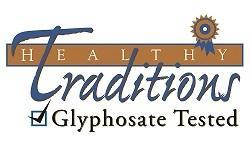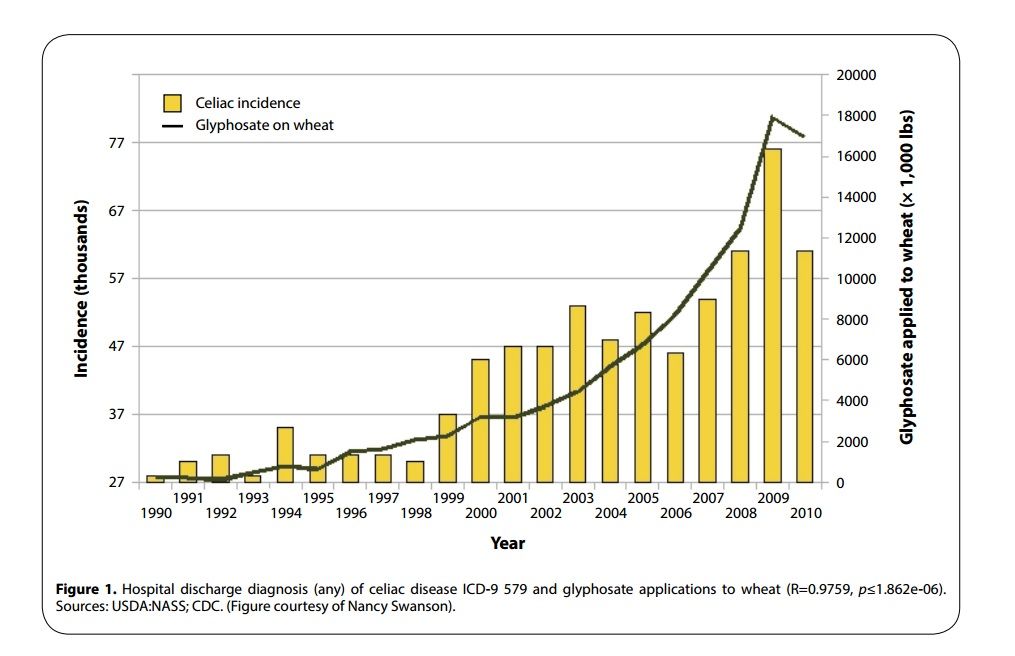News: Courts Making Bayer/Monsanto Pay Billions for Their Poison

This logo means the product has been tested for the presence of glyphosate.
We Test ALL of our Products for Glyphosate – Since 2014
Glyphosate is in 80% of our food supply in the U.S., and may well be the most toxic chemical ever approved for commercial use, according to some scientists.
Scientists now link glyphosate to kidney disease, antibiotic-resistant bacteria, inflammatory bowel disease, obesity, depression, ADHD, autism, Alzheimer’s disease, Parkinson’s disease, ALS, multiple sclerosis, cancer, cachexia, infertility, and developmental malformations.
It reportedly destroys the microbiome of humans and plants, which is seen by some as the root cause of many modern diseases.
To learn more about the dangers of glyphosate, see:
Glyphosate Herbicide Causes Antibiotic-Resistant Bacteria, Kidney Disease, and Infertility
Is Glyphosate Responsible for your Health Problems?
Common Weedkiller Used in Modern Agriculture Could be Main Factor in Gluten Intolerance
MIT Researcher: Glyphosate Herbicide will Cause Half of All Children to Have Autism by 2025
The Glyphosate Grain Problem – Gluten Intolerant or Glyphosate Intolerant?
The Glyphosate-tested program was started by Tropical Traditions due to the glyphosate contamination of wheat and other grains in North America. We have found that even wheat and other grains certified organic, or marketed as GMO-free (there currently is still no approved GMO variety of wheat commercially available in the market), will test for the presence of glyphosate, sometimes at levels nearly the same as conventional wheat.
So if there are no GMO varieties of wheat in the market, how is glyphosate getting into the wheat and other grains?
Dr. Don Huber, Professor Emeritus of Plant Pathology at Purdue University, explains why:
There are two reasons that a farmer wants to [use glyphosate on non-GMO crops]. It is for late season weed control in situations where he has patches of green weeds in the field that came up late. [This is commonly done with wheat and barley.] It is a little slower to harvest when weeds are present.
The other reason involves late season snow. In the northern region such as in the Dakotas, in certain parts of Montana, and in the Prairies of Canada, there is a very short growing season. If it snows on the crop at harvest then you may lose the crop, because you can’t get back into the field to do the harvest.
In these regions, 70% of the wheat and barley are desiccated with glyphosate before harvest. [This kills the plant so that it will wilt and dry]. Farmers don’t want to take a risk of losing their entire wheat and barley crop, so they will take a cut in yield and quality by using glyphosate a few weeks before harvest and then harvest the crop early.
Farmers don’t realize how much they are contaminating that food or feed product when they do this. They will accept the cut [in quality and quantity of the crop], because that can buy them a week advantage in harvest. It’s really more done for ease and planning. However, it is just the dumbest thing you could ever do from a health and safety standpoint.
In fact, beer brewers are having a problem with glyphosate. A few years ago, when one of my colleagues wanted to get more Abraxis test strips for testing materials for glyphosate residue, he was told that they had a 3-month backlog. He asked, what was causing this? He was told that every load of malt barley coming out of North Dakota has to be tested because the glyphosate levels were so high that it kills the yeast in the brew mix. (Source)
Anthony Samsel and Stephanie Seneff published a study titled: Glyphosate, pathways to modern diseases II: Celiac sprue and gluten intolerance in Interdiscip Toxicol. 2013; Vol. 6 (4): 159–184. They produced the following chart showing a correlation between glyphosate use on wheat and Celiac disease:

Organic Wheat not much Better than Conventional Wheat in Glyphosate Residue
Tropical Traditions decided to test this research on our own. We bought commercially available conventional (non-organic) wheat products from Canada, Montana, and South Dakota, and sent them to a well-known and respected laboratory to test for glyphosate.
All tested positive for glyphosate residue. The range was from 0.07 mg/kg to 0.09 mg/kg.
Keep in mind this is glyphosate found in non-GMO crops. For a GMO crop such as GMO soybeans, which are sprayed heavily with glyphosate, the range is typically between 3.3 and 5.7 mg/kg. (Source)
Next, we tested USDA certified organic wheat. Glyphosate is not allowed to be sprayed on organic wheat according to USDA organic standards. Sadly, we did find the presence of glyphosate residue in organic wheat, and other organic grains, including organic barley, oats, spelt, and einkorn. The range was from 0.03 to 0.o6 mg/kg, just slightly lower than the conventional grains we tested.
The only organic grains we tested that tested clean were organic rye and organic millet.
USDA Organic Standards Allow for Pesticide Residues
The USDA organic standards change so much that it is hard to keep up with what the latest standards are. We knew, for example, that the EPA had just increased the limit of glyphosate allowed in food in 2013, despite a loud public outcry. (See: EPA Raised Residue Limits of Monsanto’s Glyphosate Herbicide).
So we were not too surprised to learn that the levels of glyphosate we were finding in organic grain products were within the limits allowed by the USDA for organic certification. The organic standards for pesticide residue can be found here.
The EPA establishes the maximum allowed levels of pesticides, or EPA tolerances, which may be present on foods. Although most EPA -registered pesticides are prohibited in organic production, there can be inadvertent or indirect contact from neighboring conventional farms or shared handling facilities. As long as the operator hasn’t directly applied prohibited pesticides and has documented efforts to minimize exposure to them, the USDA organic regulations allow for residues of prohibited pesticides at or below 5 percent of the EPA tolerance.
Since the EPA standards for glyphosate are already very high, it was not surprising to find out that the levels of glyphosate residue we were finding in USDA certified organic grains were well within their limits. If both the EPA standards and USDA organic standards were too low for pesticide residue, probably more than 90% of the U.S. food supply would not be eligible for sale. It would be too contaminated.
The Healthy Traditions Glyphosate-tested Program
Unlike the EPA and USDA organic program, we don’t like any glyphosate residue in our food at all. So the Tropical Traditions and Healthy Buyer’s Club product line has a zero tolerance level for glyphosate.
For all grains now, we test every batch for the presence of glyphosate. If we detect any residue present, we don’t sell it. We are also beginning to test other organic products besides grains. We cannot guarantee any food that has been outside is 100% glyphosate-free since glyphosate has even been detected in our rainwater now. But we have no allowable limits at all, and so as we test our products, if we find any glyphosate present at all, we will stop selling it.
Is the Glyphosate-Tested Program a Guarantee?
No. To guarantee a product is 100% glyphosate-free is impossible. We cannot test every single kernel of corn we sell, for example. Here are our current testing standards:
- Batch Control – The best way to monitor quality is to be able to trace each product back to the producer. For products we purchase directly from the farm, we test a sample from each harvest. If it is a grain that needs to be milled, it must be tested after it is milled or milled in a facility that only mills Glyphosate-Tested and GMO-Tested products exclusively.
- Approved Laboratories – Currently, we use Eurofins for all of our GMO and Glyphosate testing. Eurofins is considered the world’s leading laboratory in testing for GMOs.
We have a ZERO percent tolerance for glyphosate. If any residue shows up, no matter how small, we do not sell that product.

